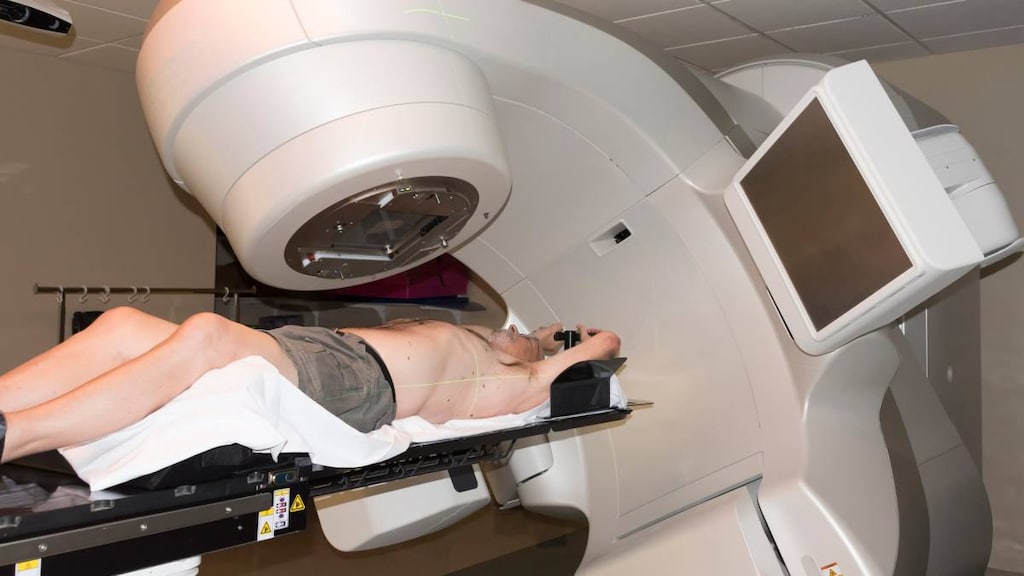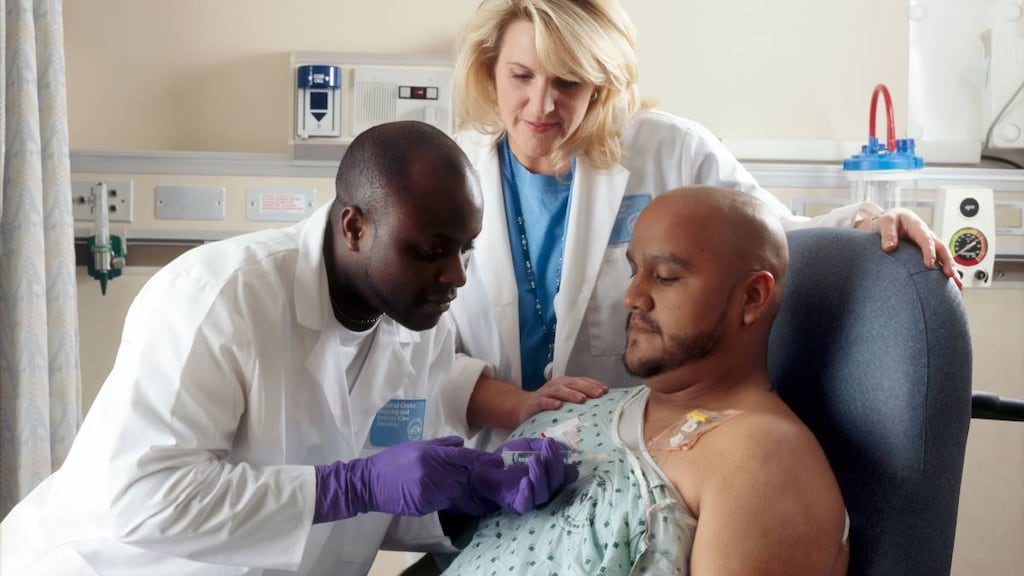Prostate Cancer Treatments: Exploring the Options

In some ways, prostate cancer is unique among cancers. Unlike the situation for many other forms of cancer, having prostate cancer doesn’t always mean that treatment is necessary. In fact, prostate cancer is often very slow growing, meaning men may not require treatment beyond the occasional test and regular doctor visits, according to the Urology Care Foundation.
Still, prostate cancer can sometimes be a deadly disease. About 175,000 new cases of prostate cancer and more than 30,000 deaths will be recorded in 2019, according to estimates from the American Cancer Society.
However, men with prostate cancer have a lot of treatment options. These range from more traditional cancer therapies like surgery, radiation and chemotherapy to cutting-edge hormone and biological therapies.
The prostate cancer treatment for you
Ultimately, the right treatment for your form of prostate cancer will depend on how severe and aggressive it is, as well the personal choices you and your doctor make about what you want from treatment.
Because many forms of prostate cancer grow very slowly, it’s often reasonable for men to simply opt for regular checkups to keep an eye on their cancer, maintaining their current quality of life without treatments that cause side effects. If prostate cancer is more advanced or fast growing, however, more aggressive treatment may be needed.
Whatever your management plan is, there are a number of treatment options for prostate cancer.
7 ways to treat prostate cancer
1. Active surveillance
Prostate cancer sometimes grows very slowly and does not spread beyond the prostate. If this fits the description of your case, then your doctor may recommend active surveillance.
What It Is: Active surveillance is actually not a treatment at all. Rather, it involves regular checkups and imaging exams to ensure that the cancer is not growing and spreading.
When It’s Used: Your doctor can advise whether active surveillance is the right choice for you. It’s typically recommended for very slow-growing forms of prostate cancer that don’t seem to pose an immediate risk.
Potential Outcomes: Some men may require treatment later in life, but many will never need it. Active surveillance allows men to avoid the negative side effects of prostate cancer treatment for as long as possible and live normally until treatment is needed, if it’s ever needed at all.
2. Radiation
Radiation therapy is one of the primary treatments used for prostate cancer, as it is for many other forms of cancer, according to the Mayo Clinic.
What It Is: Radiation can be used to kill prostate cancer cells in different ways. One approach is external beam radiation, which involves delivering radiation from outside the body while you lie on a table. Another approach is brachytherapy, which involves placing radioactive “seeds” inside the prostate tissue to deliver a longer, lower dose of radiation over time.
When It’s Used: For some cases of early-stage prostate cancer, radiation therapy may be the only treatment needed. It’s also sometimes combined with hormone therapy. In addition, it may sometimes be used after surgery to rid the surrounding tissues of cancer.
Potential Outcomes: Radiation therapy can be effective for early-stage prostate cancer and has fewer negative outcomes than surgery, the Urology Care Foundation notes. However, it can cause side effects such as incontinence, bowel problems, chronic bleeding in the bladder or bowel and erectile dysfunction.
3. Hormone therapy
When you have prostate cancer, the testosterone in your body actually helps the cancer grow. As a result, hormone therapy that blocks that flow of testosterone to the cancer can help kill the cancer, according to the Mayo Clinic.
What It Is: Hormone therapy can be delivered in a few different ways. There are medications that prevent testosterone from reaching prostate cancer cells, as well as medicines that totally block the production of testosterone. Another option is surgical removal of the testicles to prevent the majority of the body’s testosterone production.
When It’s Used: Hormone therapy is primarily used for people with advanced prostate cancer. In early prostate cancer, however, it can play a role by shrinking the tumor before the use of radiation therapy.
Potential Outcomes: Hormone therapy can be effective for advanced prostate cancer and also increases the effectiveness of radiation treatments. But, it can produce side effects such as hot flashes, reduced bone mass, weight gain, loss of sex drive and erectile dysfunction.
4. Cryotherapy
Cryotherapy is the medical term for a treatment that involves freezing body tissues. It is sometimes used to treat prostate cancer, according to the Mayo Clinic.
What It Is: The idea behind cryotherapy is simple. The freezing process kills cancer cells, so a controlled freeze followed by a controlled thaw is intended to kill cancer cells while leaving the remaining prostate tissue intact and healthy.
When It’s Used: Cryotherapy is most commonly used if radiation therapy has been unsuccessful.
Potential Outcomes: Cryotherapy is more successful and has fewer complications now than it used to. Potential complications of cryotherapy include incontinence, bowel problems, erectile dysfunction or the growth of a fistula, according to the Urology Care Foundation.
5. Biological therapy
Also known as immunotherapy, biological therapy fights cancer using the body’s own immune system.
What It Is: A form of biological therapy, known as Provenge, is approved for advanced prostate cancer treatment. It involves removing immature immune cells from the body and “training” them to fight prostate cancer before reintroducing them to the body.
When It’s Used: This therapy may be used for advanced, recurrent prostate cancer when other options have not worked.
Potential outcomes: Biological therapy has shown some success where other treatments have failed, the Mayo Clinic says. However, it's an expensive treatment that requires multiple procedures.
6. Chemotherapy
Like radiation therapy, chemotherapy is a traditional and effective cancer treatment that is known for its side effects.
What It Is: Chemotherapy involves taking medications orally or by needle. The drugs are meant to kill cancer cells throughout the body, but they also can kill some non-cancerous cells, which is why there are so many side effects.
When It’s Used: Chemotherapy may be an option for advanced forms of prostate cancer, or if the cancer has spread to other parts of the body.
Potential Outcomes: Chemotherapy has shown effectiveness for advanced prostate cancer, particularly when paired with hormone therapy. But, the side effects of chemotherapy can be substantial, including hair loss, nausea, vomiting, diarrhea, and fatigue.
7. Surgery
Surgery to remove the prostate is very effective if the cancer has not spread beyond the prostate, notes the Urology Care Foundation. However, it comes with some significant side effects.
What It Is: For this procedure, a surgeon makes an incision in the lower belly that allows the prostate to be removed.
When It’s Used: Prostate surgery is an effective option when the cancer is isolated to just the prostate and other treatment options have not been successful.
Potential Outcomes: Surgery is frequently effective, but the side effects of erectile dysfunction, reduced sexual desire and urinary incontinence are common after surgery.
The bottom line
With the wide range of treatment options available for prostate cancer, the good news is that the outcome for the disease is generally very favorable. The prognosis for men with prostate cancer is often good, and it’s even better when the cancer is detected and treated early. About 99 percent of men will survive at least five years after their diagnosis, and most men will live longer.
Article references
- What Is Prostate Cancer?, Urology Care Foundation, 2018, https://www.urologyhealth.org/urologic-conditions/prostate-cancer
- Key Statistics for Prostate Cancer, American Cancer Society, 2019, https://www.cancer.org/cancer/prostate-cancer/about/key-statistics.html
- Prostate Cancer, Mayo Clinic, 2019, https://www.mayoclinic.org/diseases-conditions/prostate-cancer/diagnosis-treatment/drc-20353093




